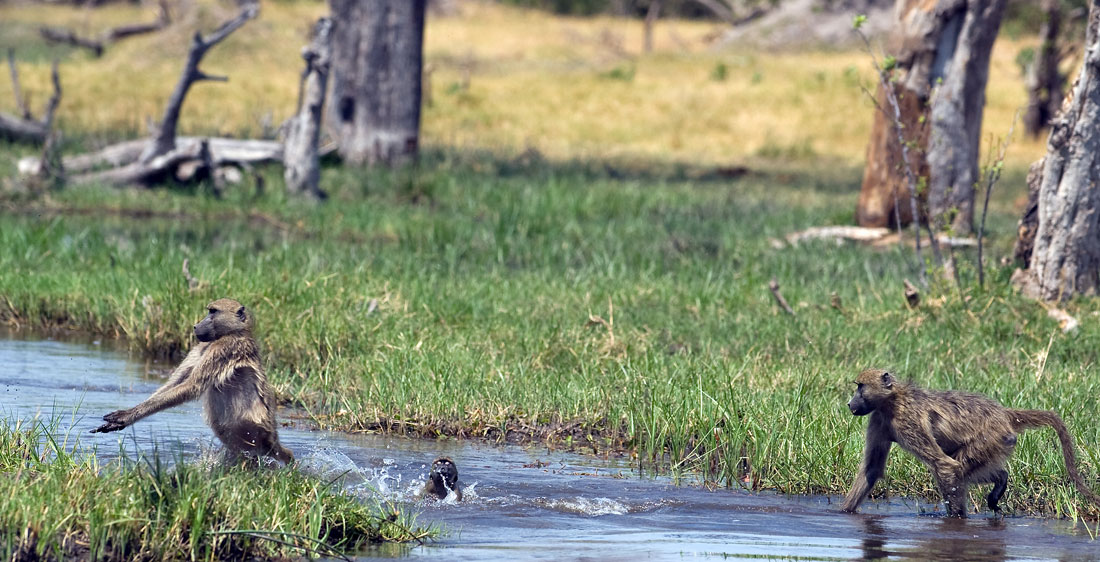Rare pygmy right whale rescued in Walvis Bay
February 27, 2013Hot Namib desert haven
February 28, 2013Photos & all copyright : Pompie Burger
Pompie Burger, one of Travel News Namibia’s favourite wildlife and birding enthusiasts, writers and photographers, recently witnessed an interesting and above all, hilarious, dilemma faced by a a troop of baboons in the Okavango Delta.
Pompie said that while he and his wife were touring through the magnificent Okavango, they were fortunate enough to come across a baboon troop as they navigated a tricky river crossing.
For some, the crossing was smooth. For others, well, the pictures are an ode to the various blows to egos and a sign that some of the group could perhaps do with a little more practice.
Pompie said that there “were no serious mishaps or drowning, although the one youngster will need to do some practicing before doing this outing again”.
Baboon Facts:
Baboons are African Old World monkeys beloning to the genus Papio
Namibia’s baboons are part of the Chacma baboon (Papio ursinus) also known as the Cape baboon
Their man foes are humans. They are also sometimes preyed upon by leopard and cheetahs, but they are known to be able to field of these attacks by using their strong physiques and exception canines.
It is one of the largest of all monkeys
Their habitat is mostly African woodland savanna and grasslands. In contrast to expectations, baboons rarely spend time in trees, and mostly forage on the ground.
A mature male measures 1.5 metres from head to tail and can weigh between 30 and 40 kilogrammes.
Females are smaller, and weight on average between 15 and 20 kilograms.
Baboons can grow as old as 45 years.
In Namibia, baboon troops occur in most areas and you will most definately come across them during your road trip.
Chacma baboons have beady, close-set eyes under a heavy brow and are mostly described as having a dog-like muzzle with sharp tusk-lik upper canine teeth.
Their rumps are one of their most prominent features. It is bare in stark contrast to the rest of the fur covered body – fur is olive-gray.
They are omnivorous and snack on wild fruits, seeds, insects and even scorpions.
They have well-develped and complex social structures
Each troop features a dominant male and a dominant female who falls in place behind him.
They are quick on their feet and are excellent maize and fruit crop thieves. They are not popular with many crop farmers
Troops can be as small as 20 and as big as 100 or more.
Gestation period is around 140 days
The view of a young infant clinging to mothers, aunts and friends, is common in Namibia.
Infants depend on their mothers protection and guidance for up to a year.
Additional Rescources:
http://www.iucnredlist.org/details/16022/0
http://www.krugerpark.co.za/africa_chacma_baboon.html
http://www.blueplanetbiomes.org/chacma_baboon.htm











